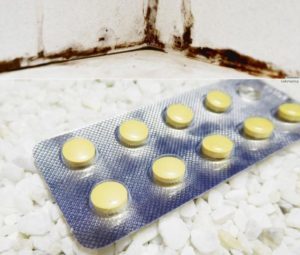Any thing in our house, unfortunately, over time loses its presentable appearance. This is especially true for the surfaces of objects that residents most often contact: a kitchen worktop, sink and bathtub. The latter often loses its whiteness and becomes covered with ugly yellow spots. This is mainly due to the impurities that tap water contains. But sometimes the cause of this phenomenon is poor or improper care of the enamel. Let's look at what can be done to return a beautiful look and whiteness.
How to renew a bath if its surface has worn out and turned yellow
The content of the article
- How to renew a bath if its surface has worn out and turned yellow
- Using household chemicals
-
Using folk remedies
- Why does the bath turn yellow
Sometimes such a nuisance may appear within a few months after installation. Therefore, before proceeding with the elimination of the problem, it is worth understanding the causes of its occurrence. You can understand this by appearance:
- Stains of rust. From the other manifestations they are distinguished by a brown-red tint. This disadvantage is typical for bathtubs located in old buildings, in which metal pipes were used for water supply. Over time, the metal undergoes corrosion and enters the water, subsequently settling in the place of its contact with the surface.
- Yellowish spots or streaks may occur due to chlorine in the water.
- If hard water flows from your faucet, then over time a calcareous deposit forms on the surface of the bathtub. If you do not pay attention to it in time, it will be difficult to get rid of it.
Reference! Tap water in large cities is often chlorinated to remove harmful bacteria from it. Drinking such water is not recommended.
At home, without resorting to the services of specialists, yellowness can be eliminated in two ways. The first is with the help of special household chemicals. The second is the use of folk remedies.
Using household chemicals
The easiest cleaning method is to use household cleaning products. Now on the shelves of shops you can find many suitable options: Sanfor, Domestes, Chiston and so on. All of them have a similar effect:
- remove rust;
- fight bacteria, mold and fungus;
- eliminate limescale.

In addition to the above, these substances have a pleasant smell. They must be selected in accordance with personal preferences. Do not forget that these products are quite aggressive, so use personal protection - rubber gloves when working with them.
Attention! To make sure that the substance is suitable for your type of coating, treat it with a small area and check the reaction.
Using folk remedies
For people with sensitive skin or chlorine intolerance, such products are not suitable. They can be harmful. In this case, you can use folk methods. To return whiteness, the following tools will come in handy:
- Baking soda. She is present in the kitchen of any housewife. The tool will help get rid of the problem if you make an effort. To do this, pour a thin layer of powder onto the area to be cleaned. After fifteen minutes, slightly moisten the soda. After the same amount of time has passed, wipe the surface with a sponge. Repeat the procedure three more times. Then rinse the surface with warm water.
- Lemon acid. The best home remedy for the fight against rust spots. For use, dissolve 25 grams in a glass of water and treat the contaminated areas with the mixture. Repeat this action three more times with an interval of half an hour. Then rinse the bathtub with clean water and ventilate the room well.
-
Vinegar and salt. Mix vinegar (half a cup) and salt (4 tbsp. l.) and warm up a little. Apply the solution to problem areas. After twenty minutes, rinse with clean water.

Reference! If you mix soda and hydrogen peroxide in a ratio of 2/1, then you will get a much more effective tool to combat yellowness and limescale.
Why does the bath turn yellow
The main reason for yellowing the bath is poor water quality. But sometimes the mistresses themselves are to blame. The result of errors in care is the loss of a presentable appearance. In order to prevent this from happening, you need to follow a number of simple rules:
- clean the coating only with the product that is suitable for it;
- after each use, the bath should be rinsed with warm water;
- once a week, it is required to carry out cleaning using special means;
- soap deposits should be removed on time - over time, it can turn into a calcareous formation.
Try not to expose the coating to a sharp change in temperature: this can lead to cracking of the enamel and weakening of the protective layer. To improve the quality of water, you can use a filter that is mounted in the plumbing system.


